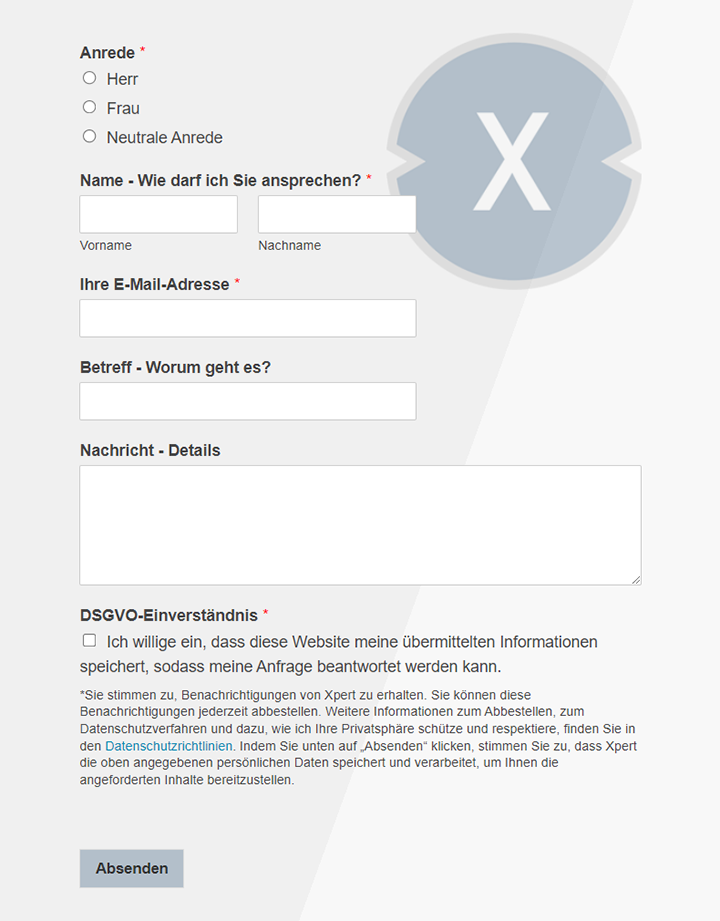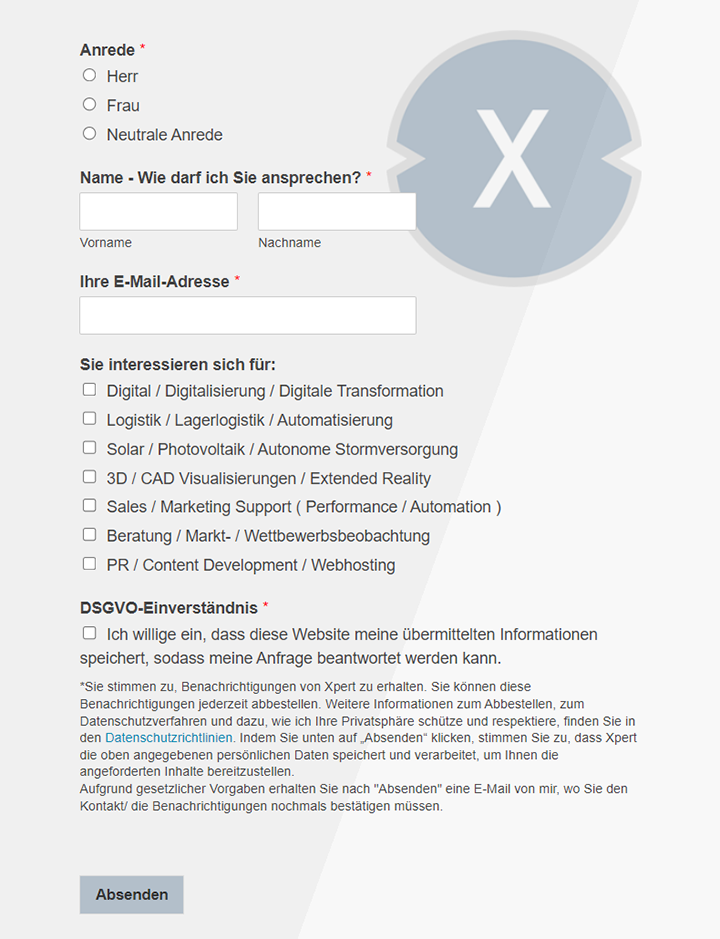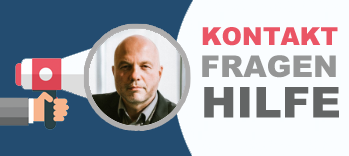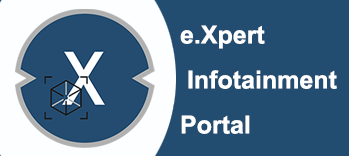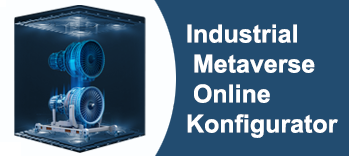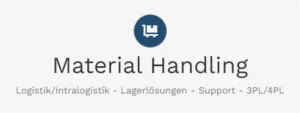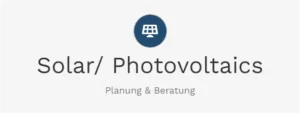Search engine optimization (SEO) in South Korea: Naver vs. Google and comprehensive content strategies
Xpert pre-release
Language selection 📢
Published on: February 22, 2025 / update from: February 22, 2025 - Author: Konrad Wolfenstein

Search engine optimization (SEO) in South Korea: Naver vs. Google and comprehensive content strategies-Image: Xpert.digital
Successful SEO strategies for the Korean market: Naver instead of Google - The Secrets of South Korean SEO
SEO in South Korea: How Naver dominates the market
The digital landscape of South Korea presents itself as a fascinating and at the same time demanding terrain for search engine optimization (SEO). Characterized by a unique search engine ecosystem and deeply rooted cultural preferences, this market requires a differentiated approach that differs significantly from global SEO strategies. While international heavyweights such as Google play a rather subordinate role in South Korea, the local platform Naver unchallenged dominates with an impressive market share of over 77 %. This dominance makes Never a central linchpin for companies that strive for digital presence and success in South Korea.
This comprehensive report aims to analyze the multi -layered aspects of the SEO in South Korea in detail. From the basic technical optimization measures to the fine art of cultural localization, all relevant areas are illuminated. Our focus is on offering profound insights into strategic approaches that enable international brands to gain a foothold in this dynamic market and achieve sustainable success. We not only take into account the special features of the Naver and Google search engines in South Korea, but also the peculiarities of Korean online culture and user behavior.
The search landscape of South Korea: a duel between the giants - naver vs. Google
The undisputed supremacy of Naver
Never is much more than just a search engine; It is a comprehensive internet portal integrated deeply into everyday Korean. It combines functions of news aggregators, blog platforms, e-commerce marketplaces and living online communities. This multifunctionality makes Naver a central junction of the Korean Internet. An impressive proportion of over 93 % of South Korean Internet users prefers mobile devices for online access, and Naver has adjusted perfectly to this usage behavior. The platform consistently relies on user-generated content (user generated content-UGC) that flourish in formats such as Naver Blog, Café forums and the knowledge platform Knowledge (a kind of Korean "Yahoo! Clever").
In direct comparison to Google, Naver follows a different approach in the weighting of ranking factors. While Google traditionally weighted on-page seed elements such as backlinks and technical aspects, Naver prioritizes the topicality, multimedia and, above all, the local relevance of content. This means that fresh, visually appealing and tailored content tends to rank better on a naver, even if they have less "classic" SEO optimization. The importance of backlinks, a cornerstone of the Google SEO, is less relevant. Instead, factors such as user engagement (likes, comments, shares) and activity within the Naver ecosystem play a larger role. This shift in priorities requires SEO experts to rethink and adapt their strategies.
Google's niche role and growing meaning
Although Naver dominates the South Korean search engine market, Google is by no means irrelevant. Google is becoming increasingly important and popular, especially in younger, technology -savvy users. With a market share of 2 %, Google remains a secondary player in the overall market, but this number should not hide its growing relevance. A parallel optimization for Google is still essential for international companies that drive global marketing campaigns. Google often serves as the first point of contact for international users and can also play an important role in brand awareness and range in South Korea, especially in certain niches and target groups.
Google's ranking factors, such as the Core Web Vital (which measure the user experience in terms of loading time, interactivity and visual stability of a website) and mobile optimization, also keep their validity in South Korea. However, adapting to Korean language standards and cultural contexts is essential. A purely English-language or insufficiently localized Google SEO strategy will hardly be successful in South Korea. It is important to merge Google's global SEO-best practices with the local peculiarities of the Korean market in order to exploit the full potential of both search engines.
Xpert.digital on naver

Xpert.digital is listed on naver.com. Here with “Meta Quest 4 publication date” - Image: Xpert.digital
More about it here:
Keyword research: linguistic precision and cultural sensitivity
The challenges of hangul optimization
The Korean language (Hangul) harbors unique challenges for keyword research. Direct translations of English keywords into Korean often lead to unsatisfactory results, since the semantics and the connotations of the words can be complex and nuanced in the Korean complex. A simple example illustrates this: The search for " 최고의 카페 " ("Best Café") and " 인기 카페 " ("Popular Café") generates different search results in naver. " 최고의 카페 " Implies a search for the highest quality café, possibly with a focus on coffee quality or ambience, while " 인기 카페 " emphasizes cafés with a high visitor frequency and possibly trendy image. These fine differences in the choice of words are crucial for a successful keyword strategy.
In order to master these linguistic nuances, the use of local keyword tools is essential. The Naver Keyword Tool and Kakao Keyword Planner ( Kakao is another important Korean Internet company) are valuable resources to gain insights into local search trends and the actual search behavior of Korean users. These tools provide data on search volumes, related terms and seasonal trends that are specially tailored to the Korean market. In addition, global SEO tools such as Semrush and Ahrefs can be used to identify cross-sector patterns and to expand the keyword search. The combination of local and global tools enables a comprehensive and precise keyword strategy.
Suitable for:
- Business thinking mistakes: The deceptive glow of English websites using the example of South Korea - more than just global content is required
- The central role of the national language in search engine optimization using the example of Hangul in South Korea
Long-tail keywords and the importance of search intention
Naver algorithms attach particular importance to intent-strong long-tail keywords. These longer, more specific search phrases usually aim at concrete transaction or information needs of the users. A typical example is the search query "서울 홍대 맛집 맛집" ("Restaurant tips near Hongdae, Seoul"). This search phrase is much more specific than the generic keyword "Restaurants Seoul" and signals a clear search intention: The user is looking for restaurant recommendations in a certain quarter of SEoul. The optimization on such long-tail keywords is often more effective on naver because it addresses the search intention of the users more precisely and provides more relevant search results.
In addition, the dynamic adaptation of the keyword strategies to seasonal events and cultural holidays in South Korea is of great importance. Festures such as Chusok (the Korean Thanksgiving Festival) or Seollal (the Korean New Year) are of high cultural importance and strongly influence the search behavior of the users. For example, while Chuseok increases searches for gift ideas, traditional dishes or travel offers around family visits, the interest in traditional games, congratulations and family activities dominates. A successful SEO strategy takes into account these seasonal fluctuations and adapts the keyword selection and content planning accordingly in order to benefit from the increased demand.
Technical SEO: Mobile First approach and local infrastructure
Mobile optimization as an inevitable necessity
In view of the extremely high mobile Internet use in South Korea (over 91 %), a consistent mobile-first strategy for SEO is not only recommended, but simply essential. Websites not only have to work on mobile devices without errors, but also offer an optimal user experience. Never evaluates the loading time of websites as a critical ranking factor and sets a limit of 3 seconds as an ideal value. Websites that exceed this loading time risk ranking losses. Google, on the other hand, weights the Core Web Vital, which, in addition to loading time, also assess the interactivity and visual stability of a website.
In order to meet the requirements of both search engines, various technical optimization measures are standard. This includes the compression of images to reduce the file size, to accelerate the use of caching strategies, recurring page views, and the implementation of accelerated mobile pages (AMP), especially for news and e-commerce content. AMP is an open source framework initiated by Google, which was specially developed for the quick display of websites on mobile devices. Careful mobile optimization is therefore a fundamental part of every successful SEO strategy in South Korea.
Hosting and domain strategy: Set local signals
The choice of the domain ending and hosting can have a significant impact on SEO performance in South Korea. Local .kr domains send a strong signal of regionality to Naver and other Korean search engines. They signal that the website is specifically geared towards the Korean market and appeals to local users. This can have a positive effect on indexing and ranking in naver search results. In addition, hosting in South Korea can improve loading times for Korean users, since data transmission within the country is faster.
The use of the Naver Webmaster Tools (today known as a Never Search Advisor) is mandatory for SEO in South Korea. In contrast to Google, whose crawlers (Googlebot) has a highly developed automatic crawling intelligence, naver rely more on manual submitting sitemaps and other information. Via the Naver Webmaster Tools, website operators can submit their sitemaps, monitor the indexation of their pages, identify crawling errors and view important performance data. These tools are essential to facilitate access to the content of the website and ensure that all relevant pages are indexed and taken into account for search queries. The proactive use of the Naver Webmaster Tools is a crucial step for a successful technical SEO in South Korea.
Content strategies for Naver and Google: A dual approach
Multimedia and user-generated content as a ranking booster
Naver measures multimedia content and user -generated content (UGC) of greater importance than purely text -based formats. Videos, infographics and interactive elements tend to be better placed in the search results and achieve a higher user interaction. Integrate successful brands in South Korea tutorial videos on Naver TV, the in-house video platform from Naver, and use Naver blog intensively for customer stories, product presentations and industry news. Naver Blog is not only a blogging platform, but also an important SEO tool to generate organic traffic and increase brand awareness.
In addition, articles in Naver Café Communities play a crucial role in strengthening the domain authority and increasing the brand presence. Naver cafés are online forums that are organized in terms of theme and in which users exchange, discuss and help each other. Active participation in relevant cafés, sharing valuable content and interaction with other users can significantly improve the visibility of a brand within the Naver ecosystem. This strategy of community engagement is an important part of the content strategy for Naver.
Cultural localization: the key to authenticity
The cultural localization of content is of immense importance in South Korea. It goes far beyond the pure translation of texts. It includes adapting language, style, sound and cultural references to the Korean target group. In B2B contexts, a formal speech ( 존댓말 - jondaenmal ) in the Korean language is essential to convey respect and professionalism. For lifestyle brands, on the other hand, a loose, informal pitch (반말-Banmal) can be more appropriate in order to build a personal and eligible relationship with the users.
Content must take into account Korean honorary titles, historical references and pop cultural trends in order to convey authenticity and relevance. K-POP collaborations, allusions to Korean dramas or films and the integration of current viral trends can significantly increase the attractiveness of content for Korean users. The knowledge and consideration of cultural nuances is crucial to avoid misunderstandings and to achieve a positive response to the Korean target group. A superficial or culturally insensitive content strategy will hardly be successful in South Korea.
Local SEO and e-commerce integration: optimize visibility and conversion
Naver Business and Google My Business: Strengthen local presence
For companies with physical locations in South Korea, corporate entries on Never Place and Kocao Maps are essential for local visibility. Naver Place is Naver's local industry directory service, while Kocao Maps is the leading map service in South Korea. Both platforms are used intensively by Korean users to find local shops, restaurants and services. Consistent NAP data (name, address, telephone number) and Korean-speaking descriptions are essential to increase the findability and trust of the users. The use of Korean characters for all information is a matter of course.
Reviews on Naver Blog and Coupang (the leading e-commerce platform in South Korea) directly influence the ranking and perception of local companies. Positive reviews and customer voices strengthen the trust of potential customers and can positively influence the decision for a company. The active care of the online call, the reaction to reviews and the promotion of positive customer voices are important measures for a successful local SEO.
E-commerce optimization: payment services and product lists
For e-commerce companies, integration with local payment services such as Naver Pay and Kakaopay is of crucial importance to improve the conversion rates. Naver Pay and Kakaopay are the most popular online payment systems in South Korea and are preferred by the majority of the online shoppers. The acceptance of these payment services signals trust and convenience and can make it easier to finish the purchase.
Product lists must be optimized for platform-specific keywords to prominently rank in naver shopping results. For example, the keyword " 정품 " ("original products") in South Korea is very relevant, since Korean consumers want to attach great importance to the authenticity of products and avoid counterfeits. The optimization of product descriptions, titles and attributes with relevant keywords and the provision of detailed product information are crucial in order to be successful in naver shopping.
Linkbuilding and digital PR: Build trust and relevance
Backlinks from trustworthy Korean sources
Although backlinks play a lower role on Naver than on Google, they are still not irrelevant. Naver evaluates on the left of established Korean media such as the Joongang Daily (one of the largest daily newspapers in South Korea) or from influential bloggers on Naver blog higher than left of global domains or unknown sources. The focus is on the quality and relevance of the backlinks, not on quantity.
Guest contributions in industry cafes and cooperation with Korean YouTube creators can generate organic signals and increase brand awareness. These strategies aim to maintain backlinks from trustworthy and topic -relevant sources on the Korean Internet. The establishment of relationships with Korean influencers and media representatives is an important part of the Linkbuilding strategy in South Korea.
Social signals: cocoa talk and navic band as an amplifier
Activities on cocoa talk channels and naver band groups can strengthen the brand presence and indirectly send positive SEO signals. Kocaotalk is the dominant messaging service in South Korea, while Never Band is a popular platform for group communication and community building. Algorithms interpret shares and comments on social networks as indicators of relevance and user interest. An active social media strategy, which is focused on cocoa talk and navic band, can thus complement and reinforce the SEO efforts. The establishment of an active community and the promotion of exchange and interaction with users are central elements.
Challenges for international brands: bureaucracy and culture
Bureaucratic hurdles and compliance requirements
International companies that want to operate SEO and online marketing in South Korea are faced with specific bureaucratic hurdles. A local legal representation is usually required for the opening of NAVER ADS accounts. This can mean additional effort and costs for foreign companies. In addition, censorship regulations and data protection laws (such as the Personal Information Protection Act - PIPA) must be observed in South Korea. Compliance checks and the adaptation of marketing materials to local laws and regulations are essential to avoid legal risks.
Cultural false adjustments and reputation risks
Cultural misunderstandings in symbolism (e.g. colors, emojis) or inappropriate translations can be significant reputation risks for international brands. Colors often have specific meanings in Korean culture that can differ from western connotations. The use of emojis can also be interpreted culturally differently. Inappropriate translations, especially for marketing messages, can not only lead to misunderstandings, but also cause negative reactions and image damage.
Cooperation with native SEO experts and the use of AI translation tools such as Papago (the AI translator of Naver) can help to minimize sources of error and to ensure cultural sensitivity in communication. Papago is specially optimized for the Korean language and often provides better results than generic translation tools. Nevertheless, the human expertise of native -language experts is essential to fully grasp cultural nuances and ensure that communication is authentic and target group -friendly.
Future trends: AI and personalization as a game changer
AI-based SEO tools: automation and precision
Naver increasingly relies on AI algorithms that analyze the search intentions of users through natural language processing (NLP). NLP enables computers to understand and process human language. This leads to more precise search results and better user experience. AI-supported SEO tools such as Bubbleshare automate the keyword research in Hangul and help to identify relevant search terms and trends faster. In addition, AI-supported content generators develop rapidly and are increasingly able to take into account cultural nuances in texts. Although these tools are not yet perfect, they already offer valuable support for content creating and optimizing.
Voice search and semantic search: new search paradigms
With the increasing spread of smart speakers and voice assistants, Voice Search is also becoming increasingly important in South Korea. The optimization of content for voice-based long-tail keywords will become more important in the future. Users often ask language -controlled search queries in the form of natural questions, such as: B. " 서울에서 날씨 어때 ?" ("How is the weather in Seoul?"). SEO strategies must adapt to these new search paradigms and optimize content in such a way that they can also be relevant and found for Voice Search.
The semantic search, which aims to understand the meaning behind the search queries instead of only setting up keywords, will also play a larger role. Naver and Google both invest in technologies that improve the semantic search. Content strategies must therefore concentrate on the creation of comprehensive, topic-relevant content that satisfy the search intention of users in their depth and not only cover keywords superficially.
Conclusion: A hybrid approach for sustainable SEO success in South Korea
SEO in South Korea requires a hybrid approach that brings technical precision, cultural empathy and strategic platform use into harmony. While Naver undoubtedly plays the central role in the South Korean search engine market, Google and emerging channels such as the (an alternative Korean search engine) may not be neglected. A successful SEO strategy combines localized keyword strategies, mobile-first designs and continuous interaction with the highly networked Korean online community.
The recognition of Naver as more than just one search engine, but as an integral part of the Korean online culture, is the key to success. Companies that are willing to engage in the special features of the Korean market, show cultural sensitivity and pursue a holistic SEO approach can achieve sustainable digital successes in South Korea. The investment in local know-how, the continuous adaptation of changing algorithms and trends and the willingness of community engagement are decisive success factors for SEO in South Korea.
Effective Naver-Seo techniques for dominance in the South Korean search market
Search engine optimization (SEO) for NAVER requires a highly specialized approach that fundamentally differs from the established Google strategies. With an impressive market share of over 62 % in South Korea, NAVER is not just a search engine, but a comprehensive, self-contained ecosystem, the blog, forums (cafés), e-commerce platforms and local services seamlessly. This detailed report analyzes the most effective techniques in order to achieve top positions in the naver search results. Findings from current specialist publications, detailed case studies and the latest algorithm updates from NAVER are taken into account in order to offer a comprehensive and practice-oriented guide.
1. Strategic orientation on Naver-specific algorithms: C-rank, P-rank and dia
C-rank (Creator Rank) and P-Rank (Page Rank): The foundations of Navers evaluation system
Navers ranking algorithm is based on two central columns: C-rank and P-rank. Understanding and optimizing for these two algorithms are crucial for SEO success on Naver.
C-rank (Creator Rank):
This algorithm evaluates the authority and trustworthiness of content manufacturers. Factors such as frequency of publication, the commitment of users (likes, comments, shares) and the thematic consistency play a central role here. A concrete example: A blog that regularly publishes (e.g. weekly) sound technical analyzes on current smartphone models and achieves a high interaction rate of the reader, is positively evaluated by C-rank and receives higher rankings for relevant searches in the area Smartphones. C-rank thus rewards expertise, consistency and user orientation.
P-rank (page rank):
In contrast to C-rank, P-Rank focuses on the technical quality and relevance of individual websites. The evaluation criteria include the charging speed of the page, the integration of relevant keywords and the use of structured data (e.g. Schema-Markup). A study by the Korean digital marketing company Interad has shown that websites with optimized meta tags (title tags with a maximum of 40 characters, meta descriptions with a maximum of 80 characters) a click rate (CTR) up to 35 % higher in the naver Achieve search results. P-rank thus ensures that technically flawless and user-friendly pages are preferred.
Dia (deep intent analysis): recognize and operate contextual search intention
A significant difference between Naver and Google lies in the way search intentions are interpreted. While Google traditionally focuses on the matching of keywords, naver prioritizes content, which completely satisfy the search intention of the users in their depth and context. Dia, Nazvers Algorithm to the Deep Intent Analysis, analyzes the search query not only on the basis of keywords, but also tries to understand the underlying motivation and the need of the user.
A clear example: When the search query "Buy winter coat", tends on Naver pages higher, which offer comprehensive information and decision -making aids, such as: B. Price comparisons, detailed size tables, information on availability (inventory data) and customer reviews. Purely product -produced pages, which only contain product images and rudimentary descriptions, tend to be placed worse. Dia recognizes that the user not only searches for products when it comes to buying a winter coat, but also for information and support in the purchase decision. SEO strategies for NAVER must therefore be aimed at not only using keywords, but also to understand the comprehensive search intention of users and to provide relevant, helpful content.
2. Localized keyword strategies: Korean language and cultural nuances
Effective use of the Naver Keyword Tools for precise keyword research
The Naver Keyword Tool is an indispensable instrument for keyword research in the South Korean market. This company -owned tool provides detailed data on monthly search volumes, related search terms and current trend analyzes that are specially tailored to the Korean search market. For example, the Naver Keyword Tool for the keyword " 에어프라이어 " (air fryer) shows a monthly search volume of around 120,000 search queries and at the same time suggests relevant long-tail variants, such as: B. " 소음 없는 에어프라이어 " (air fryer without noise) or " 대용량 에어프라이어 " (air fryer with a large capacity). This detailed information enables precise keyword planning and the identification of niche keywords with high potential.
The combination of the Naver Keyword Tools with global SEO tools such as Ahrefs or Semrush can further optimize the keyword strategy. Global tools help identify international trends and search patterns that may overlap with local Korean search trends. The synergetic use of both tool categories enables comprehensive keyword research, which takes into account both global and local perspectives.
Cultural and linguistic adaptation: go beyond pure translation
Direct translations of English keywords into Korean often fail because of cultural nuances and linguistic subtleties. The Korean language and culture are rich in context and implicit meanings that can be lost in simple translations. An appropriate example is the term "home office". While "Home Office" is used in the English, the term " 재택근무 " ( jaete 근무 - home office) is primarily used in South Korea. The term " 원격 근무 " ( won gyeok 근무 -remote work), on the other hand, tends to address a younger, technology-savvy target group and is less established in general language use.
In order to better understand colloquial formulations and the actual search behavior of Korean users, the analysis of questions and discussions Naver Knowledge iN (the Korean Q & A platform) is extremely valuable. Knowledge iN offers a direct insight into the questions, problems and formulations that Korean users actually use. This information can provide valuable information for keyword research and content creating and help to maximize the linguistic and cultural relevance of the SEO strategy.
3. On-page optimization for naver: structure, multimedia and user experience
Meta-tag optimization according to NAVER standards: concise and prompt prompt
The optimization of meta-tags, in particular title tags and meta descriptions, is also of great importance for Naver, but requires adaptation to the specific requirements of the platform.
Title tags:
For Naver, the title tags should be precise and a maximum of 40 characters to ensure that they are fully displayed in the mobile search results lists (SERPS). An effective title day should contain the focus keyword and ideally convey a clear request for action or a promise of value. Example: " 2025년 최고의 무선 청소기 추천 " ( 2025nyeon choegoui museon cheong sogi chucheon - recommendation of the best wireless vacuum cleaners 2025). This title day is concise, keyword-optimized and arouses the user's interest.
Meta descriptions:
Meta descriptions should be formulated in action-oriented and encourage users to click. You can highlight secondary keywords and specific offers or advantages. Example: " 지금 구매하면 30% 할인 " ( jigeum gumaehamyeon 30% halin - buy now, 30 % discount). META descriptions should use the search volume of secondary keywords and clearly communicate the added value of the offer.
Content structure according to Naver guidelines: readability and multimedia integration
The structuring of content plays a crucial role in the user experience and the ranking on Naver. Clearly structured, easily readable content with integrated multimedia elements are preferred by NAVER.
Headline structure (H1 and H2 tags):
H1 and H2 tags should naturally embed relevant keywords without operating keyword stuffing. An analysis of Aimarketengineers has shown that articles with 3–5 sub-headings (H2-tags) per 1,000 words achieve a length of stay of up to 50 % longer. A clear heading structure improves readability and helps users and search engines that better capture content.
Multimedia integration:
Naver prioritizes websites with embedded videos (especially from Naver TV) and infographics. A case study by the content marketing company Datawords documented a significant increase in traffic of up to 70 % after the addition of product videos to websites. The integration of visual elements such as videos, infographics and high -quality images increases the attractiveness and commitment of the content and has a positive effect on the ranking in Naver.
4. Technical SEO adjustments for Naver: Mobile First and Crawler Optimization
Mobile-First indexing: Optimization for mobile users
In view of the dominant mobile internet use in South Korea (over 91 % of users access naver via smartphones), consistent mobile-first optimization is of crucial importance. Technical prerequisites for a successful mobile-first strategy include:
Loading times under 2 seconds:
The loading time of a website is a critical ranking factor for naver. Ideally, websites should load in less than 2 seconds, measured by the Naver Search Advisor Tool. Long loading times lead to poorer user experience and can lead to ranking losses.
Responsive design with click -optimized elements:
Websites must have a responsive design that automatically adapts to different screen sizes and is optimally displayed on mobile devices. Click -optimized elements, such as B. Buttons and links should have a minimum size of 48 × 48 pixels to ensure the usability on touchscreens.
AMP support (Accelerated Mobile Pages):
The implementation of AMP is particularly recommended for news and e-commerce sites. AMP ensures extremely fast loading times on mobile devices and significantly improves the user experience. NVER supports AMP and rewarded websites that use this technology with better rankings in the mobile search results.
Crawler optimization for Navers offered "Yeti": Sitemap submission and technical subtleties
Navers Crawler "Yeti" differs in his skills and behavior from Google's Googlebot. Crawler optimization for Yeti requires specific measures:
Manual Sitemap Entry via Search Advisor:
In contrast to Google, which Sitemaps often automatically recognizes and crawls, the manual submission of sitemaps via the Naver Search Advisor (formerly naver webmaster tools) is essential for naver. This ensures that NVER finds and indexed all relevant pages of the website.
Avoidance of JS-based navigation elements:
Yeti has limited rendering skills and may not fully interpret Javigation-based navigation elements. It is recommended to use server -side rendering or alternative navigation techniques to ensure that Yeti can crawl all content and links on the website.
Canonical tags for duplicate content avoidance:
The correct use of Canonical Tags is important to avoid duplicate content and to tell you which version of a page should be indexed as the primary and relevant version. This is particularly relevant for e-commerce pages with product variants or similar content.
5. Off-page strategies in the Naver ecosystem: Blog, Café and Smart Place
Naver Blog and Café: Community engagement and content synergies
Naver Blog and Never Café are central elements of the Naver ecosystem and offer valuable opportunities for off-page SEO.
Naver blog:
Company blogs on Naver generate an average of three times more organic traffic than external websites. Success factors for Naver blogs are:
- Regular updates: Weekly publications with high -quality content, such as B. tutorials, customer stories, industry analyzes and current news.
- Interaction with user comments: Fast reaction to user comments within 24 hours to promote community interaction and demonstrate user closeness.
- Cross-promotion: Active cross-promotion of blog content in topic-relevant cafés and other naver services to increase range.
Never Café:
Naver cafés are topic-specific online forums with active communities. Active participation in relevant cafés and sharing valuable content can strengthen brand awareness and domain authority. Example: Participation in the " 전자제품 리뷰 " ( jeonjajeopum 리뷰 -electronics review)) is relevant for an electronics company.
Naver Smart Place for Local Visibility: Industry Directory and Conversion Booster
Naver Smart Place is Navers local industry directory and an indispensable tool for local SEO. The optimization of company profiles on Smart Place includes:
- Complete NAP data: consistent and complete NAP data (name, address, telephone number) with precise geo-tags.
- Visual elements: Upload 360-degree-store views and professional product videos to give users a virtual insight.
- Naver Pay Integration: Integration of Naver Pay to promote direct conversion increase and to offer users a convenient payment option.
6. Content localization and cultural relevance: authenticity and target group address
Professional translations vs. AI tools: human expertise vs. automation
The choice between professional translators and AI-based translation tools is crucial for content localization in South Korea. Automated translations often reach their limits, especially in the case of Korean courtesy forms ( 존댓말 – jondaenmal ) and industry -specific technical jargon. A study by the language service provider Linguise has shown that manually localized content has up to 80 % higher user interaction than automatically translated content. Professional translators with native -language knowledge and cultural understanding are therefore essential to create high -quality and culturally relevant content. However, AI tools can serve as supporting tools to accelerate and optimize the translation process, but should always be accompanied by human expertise.
Trend jacking with naver services: use current trends and maximize range
The integration of NAVER trend data into the content calendar enables a quick reaction to viral topics and current trends. Never offers various services, such as B. Naver Realtime Keyword Ranking, which display current trend topics and search terms in real time. Trend jacking, the strategy of picking up current trend topics and integrating it into your own content strategy, can significantly increase the range and visibility of content to naver. Example: A beauty retailer used the hype around the K-Pop star IU by posting a make-up guide on Naver blog within 24 hours, which referred to the star's look. This quick reaction to a current trend led to over 12,000 organic clicks and a significant increase in brand awareness.
7. Performance monitoring and iterative adjustment: data-controlled optimization
Never Search Advisor: Detailed insights into performance data
The Naver Search Advisor (formerly Never Webmaster Tools) is the central tool for performance monitoring and data analysis in the Naver Seo. The tool offers detailed insights into:
- Keyword rankings: Daily updates of the keyword rankings to monitor the SEO performance and identify optimization potential.
- Crawling errors and indexing status: Identification of crawling errors and review of the indexing status of websites to fix technical SEO problems.
- User behavioral metrics: Analysis of user behavior metrics such as bounce rate (bounce rate) and length of stay (DWELL TIME) to optimize and improve content.
A/B testing of content: CTR increase through data-driven optimization
A/B testing of content is an effective way to improve the user experience and increase the click-through rate (CTR) in the naver search results. By practicing several versions of blog articles (e.g. with different title formulations, meta descriptions or content structures), CTR increases of up to 40 % can be achieved. A/B testing enables data-driven optimization of content and contributes to identifying the most effective content strategies for naver.
The five columns of sustainable naver-Seeo
- Algorithm compatibility: Consistent orientation of the SEO strategy to the Naver algorithms C-rank and DIA by regular publication of high-quality, interactive content that comprehensively satisfy the search intention of the users.
- Hyperlocal Keyword strategies: Development of hyperlocal keyword strategies through the combination of naver-specific tools (naver keyword tool) and profound understanding of cultural nuances and Korean voice peculiarities.
- Technical precision: Maximum technical precision in mobile optimization, compliance with the loading time specifications and crawler-friendly design of the website for Navers offered "Yeti".
- Ecosystem integration: Active and strategic use of the Naver ecosystem, in particular Naver Blog, Never Café and Never Smart Place, to increase brand awareness, domain authority and local visibility.
- Continuous optimization: Continuous performance monitoring and iterative adaptation of the SEO strategy based on data from the Naver Search Advisor and A/B testing to achieve sustainable SEO successes.
Companies that consistently implement these comprehensive NAVER-SEO techniques can record their organic traffic on average within 6–12 months.
Our recommendation: 🌍 Limitless reach 🔗 Networked 🌐 Multilingual 💪 Strong sales: 💡 Authentic with strategy 🚀 Innovation meets 🧠 Intuition
At a time when a company's digital presence determines its success, the challenge is how to make this presence authentic, individual and far-reaching. Xpert.Digital offers an innovative solution that positions itself as an intersection between an industry hub, a blog and a brand ambassador. It combines the advantages of communication and sales channels in a single platform and enables publication in 18 different languages. The cooperation with partner portals and the possibility of publishing articles on Google News and a press distribution list with around 8,000 journalists and readers maximize the reach and visibility of the content. This represents an essential factor in external sales & marketing (SMarketing).
More about it here:
We are there for you - advice - planning - implementation - project management
☑️ SME support in strategy, consulting, planning and implementation
☑️ Creation or realignment of the digital strategy and digitalization
☑️ Expansion and optimization of international sales processes
☑️ Global & Digital B2B trading platforms
☑️ Pioneer Business Development
I would be happy to serve as your personal advisor.
You can contact me by filling out the contact form below or simply call me on +49 89 89 674 804 (Munich) .
I'm looking forward to our joint project.
Xpert.Digital - Konrad Wolfenstein
Xpert.Digital is a hub for industry with a focus on digitalization, mechanical engineering, logistics/intralogistics and photovoltaics.
With our 360° business development solution, we support well-known companies from new business to after sales.
Market intelligence, smarketing, marketing automation, content development, PR, mail campaigns, personalized social media and lead nurturing are part of our digital tools.
You can find out more at: www.xpert.digital - www.xpert.solar - www.xpert.plus





